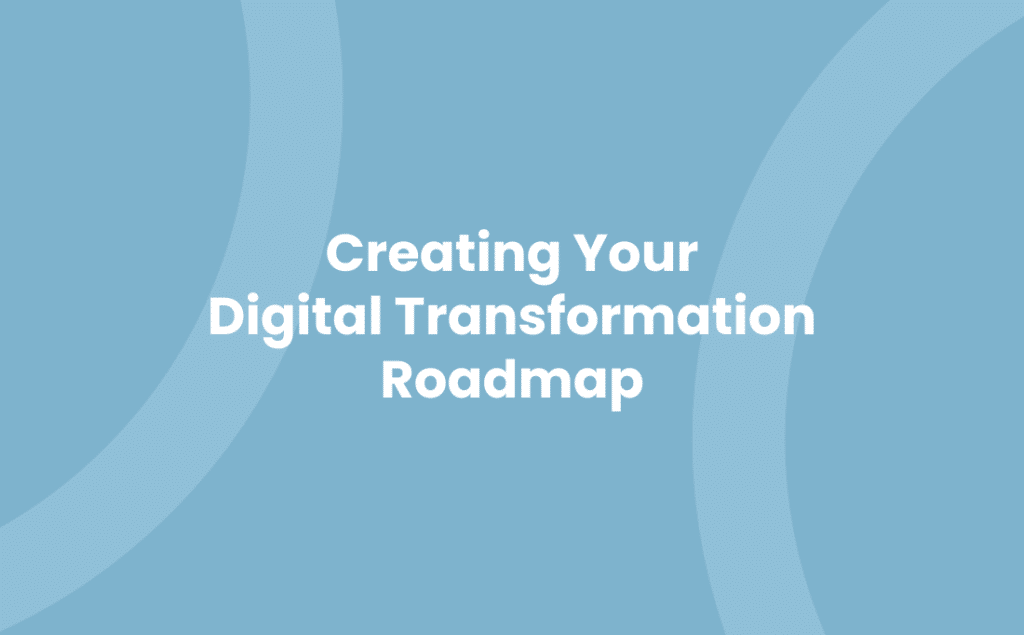Embarking on a digital transformation journey, are you? It’s an exciting yet challenging path that requires careful planning and strategic foresight. A well-crafted roadmap is your key to navigating this digital terrain successfully.
In this digital era, the transformation isn’t a luxury; it’s a necessity. But how do you chart your path? How do you ensure your journey is smooth and leads to the desired destination?
Stay tuned as we delve into the world of digital transformation roadmap planning. We’ll explore its importance, the steps involved, and how to avoid potential pitfalls. Buckle up for an enlightening journey into the future of your business.
Understanding Digital Transformation
Digital Transformation, an integral part of your business strategy, signifies the integration of digital technologies into all areas of your business. Replace manual, outdated processes with innovative, streamlined digital solutions to redefine customer experiences and create a flexible operational model. This pivotal shift, driven by evolving technology and changing consumer expectations, accelerates business activities, enhances competitiveness, and ensures survivability in this digital-first age.
To actualise this transformation, a digital transformation roadmap is absolutely crucial, providing a strategic layout for the journey. Each step in your digital planning is systematically structured, creating a path that aligns the objectives, technologies, and digital initiatives with ultimate business goals.
Your digital transformation journey isn’t one-size-fits-all. The scope varies across companies based on business goals, technological capabilities, and industry dynamics. But the core premise remains – to change the way you deliver value to your valued customers and stakeholders.
A digital transformation roadmap usually comprises various components, including but not limited to:
- As-Is Assessment: To effectively embrace digital transformation, understanding current business processes and technologies in your organisation is vital. You need to conduct a thorough evaluation, measuring them against industry benchmarks.
- Digital Strategy Formulation: This involves finalising the desired state of digital transformation in congruence with your business goals, identifying the gaps between current and desired states, and defining strategies to bridge those gaps.
- Implementation Plan: This revolves around prioritising the identified gaps and defining an order of implementation. Furthermore, this step includes laying out technology, initiating pilot projects, and designing communication plans for stakeholder management.
- Monitoring and Measurement: This process involves defining Key Performance Indicators (KPIs) and other metrics and using them to measure the success of your digital transformation efforts.
Remember, digital transformation is an ongoing process, not a one-time effort. It involves constant monitoring, updating, and improving, requiring fluidity in planning and execution. Most importantly, your digital transformation journey’s success depends on the people – your employees who are the foremost agents of change. With correct planning and support, digital transformation becomes more than just an initiative, it evolves into a culture that is woven into the very fabric of your organisation. And, this, ultimately, is the essence of true digital transformation.
Concept of Roadmap Planning in Digital Transformation
Diving deeper into the digital transformation journey, the essence of roadmap planning gets magnified. In the realm of digital planning, a digital transformation roadmap serves as your tactical sidekick. It isn’t just a chart with a timeline and milestones, it’s a strategic compass that guides your voyage in the turbulent seas of digital transformation.
Let’s first peel back the layers on ‘roadmap planning’. It’s indeed centred on devising a step-by-step guide. The objective? Achieving the ultimate goal of digital transition within your organisation. This includes identifying strategic initiatives, defining roles, and setting timeframes to keep your digital transition on track.
Roadmap planning in light of digital transformation, however, pulls higher weight. You’re not simply drafting a plan here, instead, you’re envisioning a blueprint for your company’s future. It ensures seamless integration of digital technology into each business aspect, elevating customer experiences while boosting operational flexibility.
The importance of roadmap planning for digital transformation can be paralleled to the value of architectural planning in construction. You wouldn’t build a house without blueprints, right? Similarly, embarking on your organisation’s digital transformation without a well-crafted roadmap is a risk you don’t want to take.
A detailed digital transformation roadmap anticipates obstacles, minimises guesswork, aligns objectives, and spotlights blind spots even before they emerge. It fosters agility and quick decision-making, key attributes for successful digital transformation in the face of rapidly changing technology landscape.
The roadmap is your guide; it’s your compass when exploring the realm of digital transformation. Irrespective of the digital change, a well-curated guide makes your journey smoother, less prone to pitfalls, and ultimately, successful.
Remember, the terrain of digital transformation is as challenging as it is rewarding. But, with a tailor-made digital transformation roadmap as your ally, rest assured, you’re rigged for a smooth journey in your quest for digital excellence.
Starting with Digital Transformation Roadmap Planning
Embarking on the path of digital transformation necessitates a pivotal first step: devising a comprehensive digital transformation roadmap. This roadmap acts as the keystone, underpinning the successful execution of your digital initiatives. It outlines your business’s march towards digital maturity, lining up initiatives, setting measurable goals, and determining timelines.
Effective roadmap planning starts with assessing your digital maturity level. This assessment, grounded in realism, enables you to pinpoint exactly where your company stands in the digital landscape. Whether you’re a digital novice or a pro, it helps you identify gaps in your current technology stack, data management, and digital skill sets.
Following this, draw up your digital strategy. This strategy, put simply, is your vision powered by digital tech. It translates your company’s core objectives and vision into a clear, achievable maneuver. For instance, if delivering top-notch customer experiences is your goal, your strategy may involve harnessing AI-powered solutions or investing in customer relationship management (CRM) software.
The next step, arguably the most crucial one, is crafting your digital transformation blueprint. Here, the digital initiatives get mapped out on an operational timeline, akin to the layout of a physical structure in architectural plans. For example, a firm moving towards a data-driven model might first implement a data warehouse, followed by BI tools, and subsequently, predictive analytics.
Monitoring the progress completes the roadmap planning. Feedback loops, digital KPIs, and analytics form your toolset for gauging the success of implemented initiatives. Along with regular monitoring, adjusting your roadmap according to real-time feedback is a strategic practice. For instance, if you spot a low ROI on your AI project, it might be time to rethink and readjust.
The reality of a digital transformation journey is that it’s challenging. But armed with a well-planned roadmap, you’re equipped to sail smoothly through the waves of digital revolution. It anticipates hurdles, cultivates agility, and aids in prompt decision-making. Your roadmap thus not just facilitates digital transformation but makes it a more controllable and less intimidating endeavour. It is the compass steering you towards digital excellence, the lantern illuminating your company’s journey in the digital realm. Remember, your roadmap isn’t set in stone, it’s built to evolve with the dynamic world of technology. Embrace the change, and steer your ship with confidence and foresight.
Steps Involved in Digital Transformation Roadmap Planning
Transformation through the digital medium is no simple feat. It requires effective planning and orchestrated effort. Here, you’ll find the vital steps to craft a sound digital transformation roadmap.
- Assess Digital Maturity: Comprehend where your business currently stands. Evaluate the digital maturity level that your business possesses. This can range from basic to advanced stages such as initiating, enabling, integrating, or optimising digital endeavours. A digital maturity model assesses applications’ capabilities, production flexibility, and overall digital acumen.
- Identify Pain Points and Opportunities: After the assessment, identify pain points, areas that need attention, and potential growth opportunities. This could involve examining operational inefficiencies, lagging customer experiences, or outdated technologies.
- Formulate Digital Strategy: Create an overarching digital strategy that encompasses your business vision, goals, and objectives. At this stage, you align the digital initiatives with the business objectives.
- Craft Transformation Blueprint: With the strategy in hand, it’s time to devise a transformation blueprint. This outlines the operations, resources, and timelines involved in your digital overhaul.
- Secure Stakeholder Buy-in: For the roadmap to work effectively, get the stakeholders on board. Share the strategy, implications, and benefits to garner their full support.
- Resource Allocation and Budgeting: Identify and allocate necessary resources and budget for implementing the roadmap. It’s critical to invest in authenticating tools, technologies, training, and additional digital implementation essentials.
- Execution: Begin the execution phase prudently. Every step needs careful attention, be it deploying a new tech solution or re-engineering a business process.
- Monitoring and Tracking Progress: Constantly measure the impact of your digital initiatives. Utilise Key Performance Indicators (KPIs) to track progress and ascertain that everything aligns with your intended goals.
That’s the nutshell of digital planning for a transformation roadmap. Remember, it’s not a one-time job. Continuously revisit your roadmap, adapt as necessary, and ensure your business stays ahead in the digital game.
Handling Challenges during Digital Transformation Roadmap Planning
Handling challenges with aplomb is key during digital transformation roadmap planning. Below are valuable insights that strike a balance between professional know-how and occasional light humour.
- Diagnose Unforeseen Difficulties: Discovering roadblocks in the early stages results in a more manageable plan. Start by pinpointing potential hindrances, like time constraints, limited resources, or lack of digital literacy. React fast, adapt and stay flexible to prevent these from derailing your journey.
- Prioritise Staff Re-skilling: Digital transformation isn’t just about adopting advanced software. It’s about your people. Often, staff may resist new ways of working. Overcome this resistance by fostering an environment of learning and support. Offer training initiatives that allow your team to evolve and keep up with digital industry trends.
- Balance Innovation and Preservation: While it’s vital to embrace innovation, preserving certain key aspects of your existing system is equally important. Balancing these two aspects ensures smooth transition. Identify core capabilities and look for ways to digitise them without causing significant disruption.
- Engage Stakeholders: One of the essential elements in overcoming challenges is to make sure all your stakeholders are on board. Communicate your digital transformation objectives clearly. Encourage collaboration and solicit feedback to strengthen your approach.
- Budget and Resource Allocation: Digital transformation requires careful allocation of both financial and human resources. Build a clear budget plan that accounts for potential changes. Allocate resources efficiently, focusing on key areas that contribute most towards your digital goals.
Navigating the demanding landscape of digital transformation roadmap planning may be a challenge, but armed with these insights, you’re one step closer to achieving your digital goals.
Real world Case Studies
As you delve deeper into the criticality of a digital transformation roadmap, examining some real-world case studies can bolster understanding. Providing contextual relevance, these instances boost comprehension of how businesses navigate the roadmap planning process, and highlights the ways they handle challenges.
- Case Study 1: Major Telecom Operator’s Digital Transformation
A renowned telecom operator embarked on digital transformation to up their game in an intensely competitive market. They began the journey with a comprehensive assessment of their operations. After formulating a strategy, the company focussed on digital planning. Emplacing an agile work culture and re-skilling their team remained a top priority for them. Despite unforeseen complications, they prevailed because of their adaptable attitude and persistence. Resultantly, they created a digitised, streamlined customer service that sets them apart from their competitors.
- Case Study 2: Versatile Retailer Embraces Digital Technologies
A growing retailer realised the potential of digital transformation in enhancing organisational productivity. They launched their digital planning initiatives, being wary of unanticipated complexities. They prioritised stakeholder engagement and budgeted resource allocation, ensuring the transformation didn’t compromise their ongoing operations. Although fraught with challenges, they emerged victorious, recording a notable increase in productivity and customer satisfaction.
- Case Study 3: International Bank Adopts Digital Transformation
An international banking heavyweight took the digital leap, keeping in mind their expansive global operations. Planning their digital transformation roadmap was a mammoth task, given the complication of integrating several processes. However, their commitment to striking a balance between innovation and the preservation of what worked well in the past was admired. Despite stiff challenges, they meticulously improved their operational flexibility, serving their customers better and increasing their market share.
From these case studies, it’s clear that a digital transformation roadmap isn’t a mere checklist, but a strategic tool that, when executed correctly, can bring about significant benefits. With the right resources, strategy, and adaptability, successful digital transformation is within your grasp.
Conclusion
So you’ve seen the importance of careful planning and strategic foresight in digital transformation. It’s clear now that enhancing your customer experience and operational flexibility through digital technologies is no walk in the park. You’ve learned about the key components of a digital transformation roadmap and how businesses, like the telecom operator, retailer and bank, navigate this process. You’ve seen how they’ve overcome challenges and reaped the benefits of their efforts. It’s been shown that maintaining adaptability, engaging stakeholders, and balancing innovation with existing practices are crucial to success. Now it’s your turn. Apply these insights to your business and start your journey towards a successful digital transformation.


